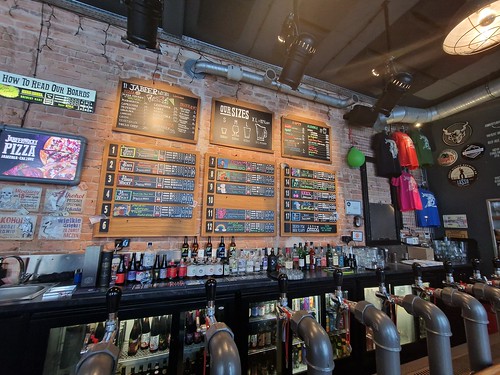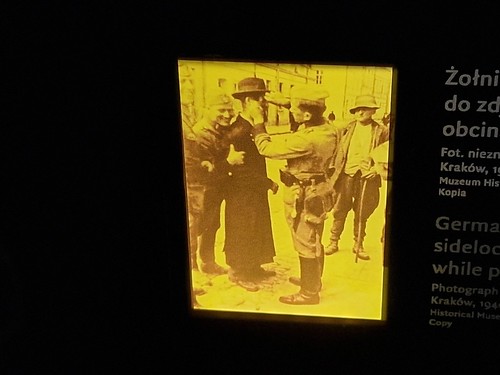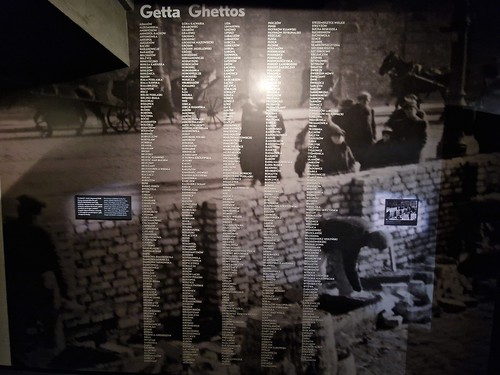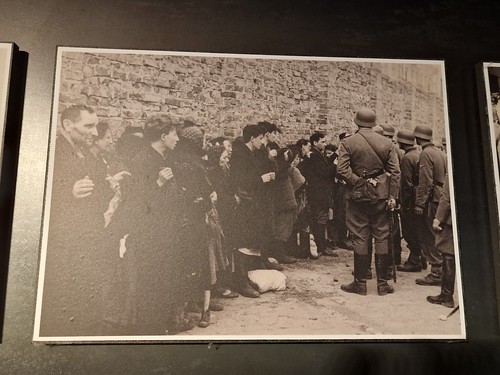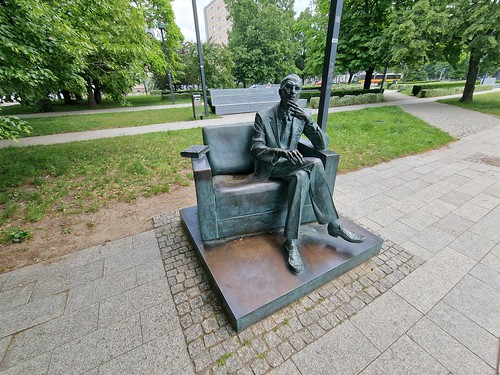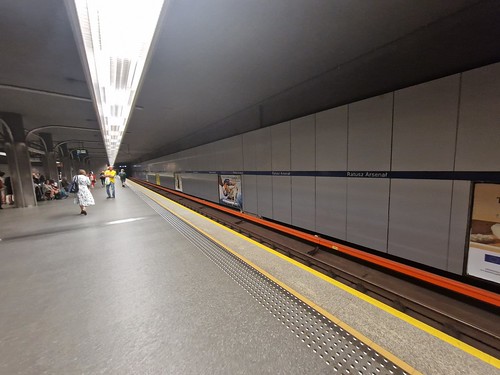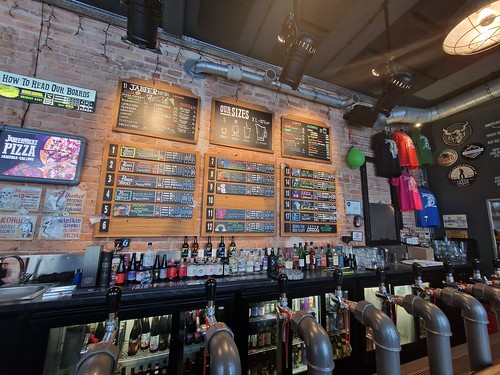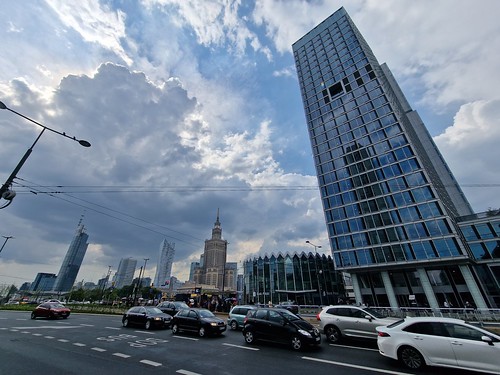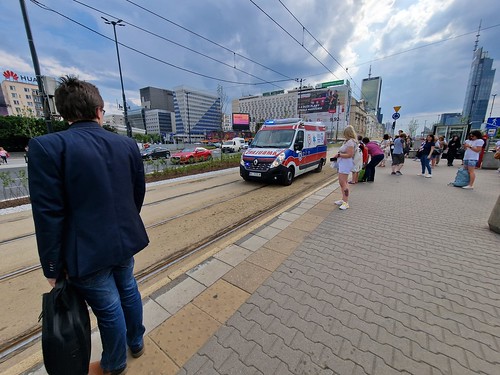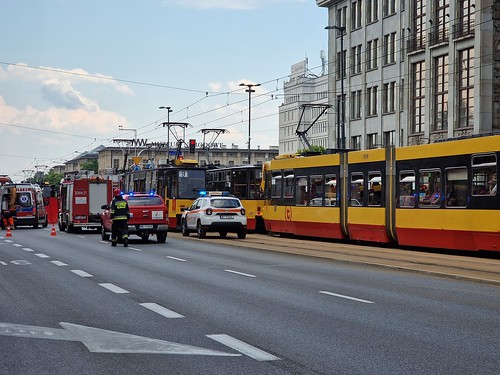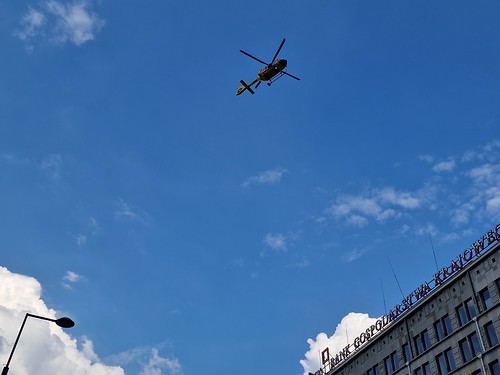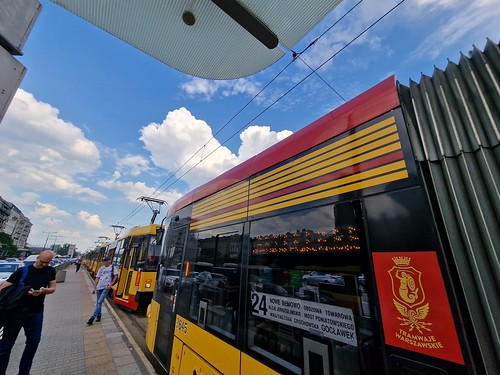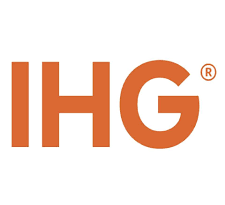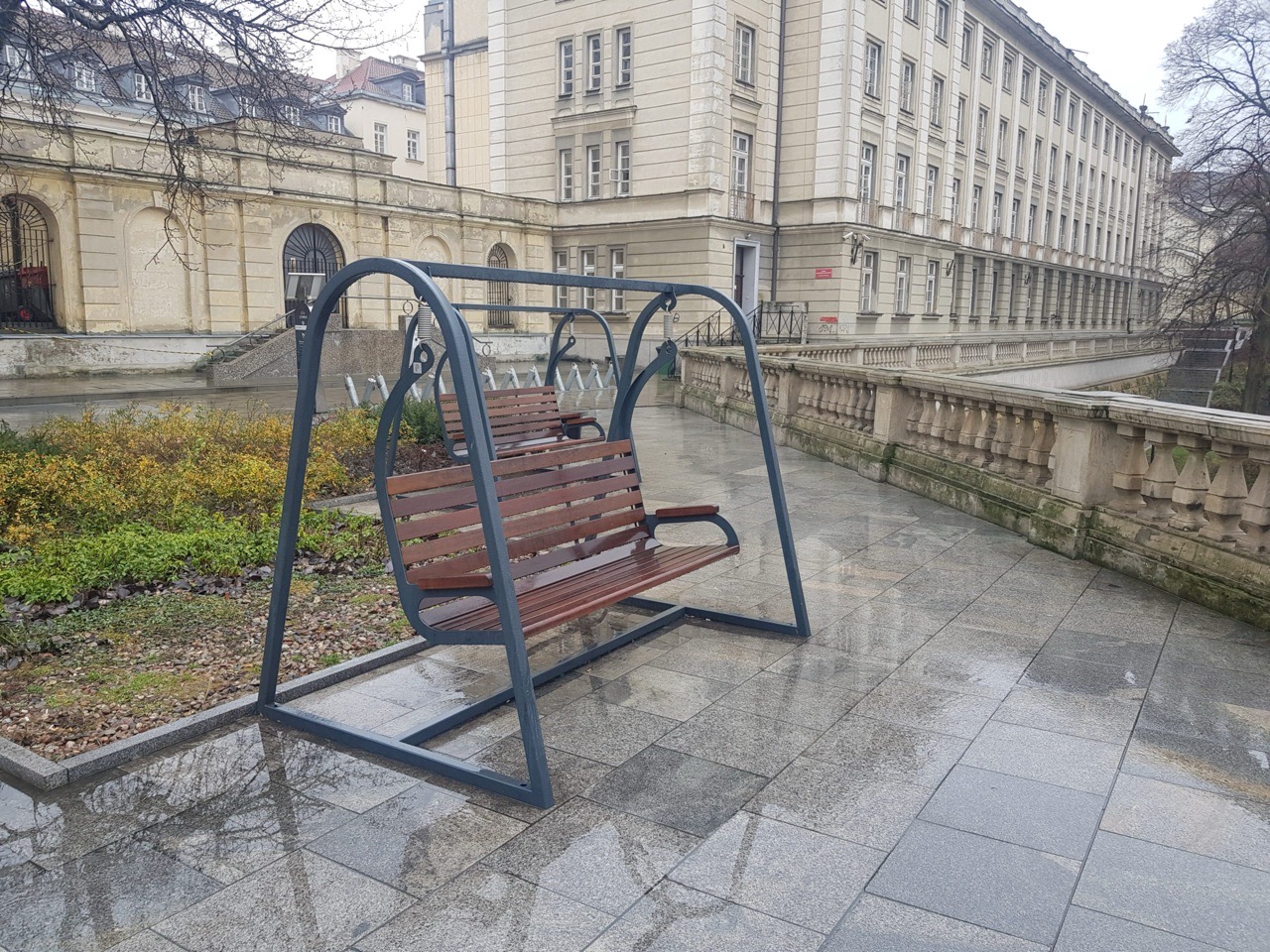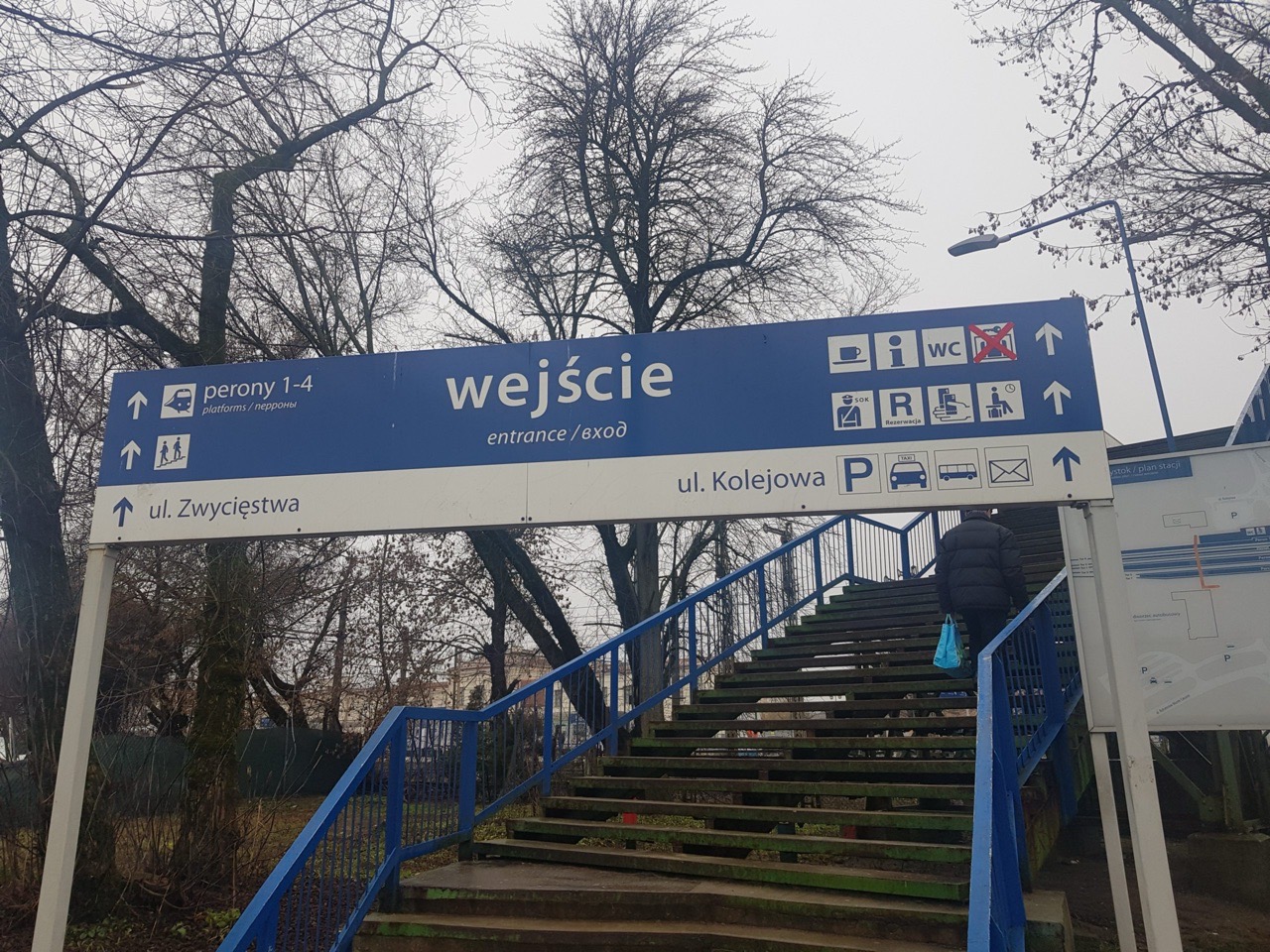Thursday : Pottering Around Warsaw
I can’t remember the exact number of visits, but this is something like the twentieth time I’ve come to Warsaw, one of my most favourite cities. I thought that I’d treat myself to a leisurely day in the city without needing to rush around.
The leisurely day started with the Mercure hotel breakfast arrangement, with a mound of chicken that I’d hidden underneath the rolls as my first plate.
The selection has definitely got better here over the years, although there are no gherkins which is unusual for a Polish Accor hotel, but the selection of cold meats is certainly sufficiently decadent. Often Ibis hotels have meats that I can’t identify by sight or taste, so I tend to stay clear of those, but it was much better here. There are other counters with pastries, hot food and other random things such as fruit.
I thought I’d splash out the £2 or so for an unlimited travel card for the day, which are much more affordable than the equivalent ticket in London.
The POLIN Jewish museum, which I’ve been to before, but as it was the free admission day, I decided to see what temporary exhibitions they had on. There were a lot of school parties touring the museum, but they were all suitably well behaved, something rather necessary given the nature of the museum. Oddly, the museum has decided to let visitors put their bags into the luggage storage area themselves and pick them up themselves, which seems a slight security risk to me. I spent most of my time in the museum worrying whether my laptop was safe, as unlike my friend Liam, I feel the need to worry about these things. I doubt Liam would have even thought about the risk, he’s far too care-free.
Kazimierz is the Jewish quarter of Krakow, relevant to me as it’s where I’m currently sitting writing this a couple of weeks on. I’ll catch up on posts soon enough…..
The decorative nature of Jewish art, this is a recreation of the Gwoździec Synagogue which is now in Ukraine and which was destroyed by the Nazis during the Second World War.
One of the elements that is interesting to me about the situation for the Jews in Poland during the 1930s is that many didn’t know what to do. Some just hoped the Germans wouldn’t invade Poland, so the fear of repression and hatred that Jews in Germany were suffering from might not have come to pass in anywhere near the same way. This photo is of the Cembal family from the town of Wyszków which is located to the north-east of Warsaw. Israel (third from right) was able to get to Argentina in 1935, but there were sufficient anti-semitic incidents that caused his wife and daughter fearful and so in 1937 they too managed to join Israel in South America.
The part of this which I find relevant is just how much the remainder of the post-war Jewish population must have looked back on their lives and wondered if they should have fled earlier and why they didn’t. Some, such as Otto Frank, had taken their family from Germany to Amsterdam, hoping they would find peace and freedom there. It was never inevitable that the Germans would march across Europe so quickly and decimate the Jewish population to the extent that they did, so it’s understandable that many families didn’t take the risk of uprooting themselves and fleeing. Hindsight is of course a wonderful thing and those who successfully left must have only looked on with horror with what they escaped. Although many Jewish families wouldn’t have sufficient money to be able to afford to flee, or the domestic arrangements to support such a move.
This photograph appears frequently in displays on the Holocaust and it was taken in the Krakow ghetto in 1942 (although the museum dates it to 1940). That grinning face of the Nazi officer is sinister and the ever present on-looker who did nothing to help.
This image is from Krasiński Square in Warsaw and was taken in 1940, with the Polish reading “Jews must not walk on this side of the street”.
The museum doesn’t have a huge number of exhibits, partly because not much survived the ghetto and also because it’s relatively new and so other institutions have had time to build up more substantial collections. This is an anti-typhus vaccine which was smuggled into the Warsaw Ghetto, likely from Lwów (now the Ukrainian city of Lviv) or Krakow.
The ghettos established by the Germans in Poland, this is another example of the sheer enormity of what happened in the country during the early 1940s.
This photo is one of 53 taken by Franz Konrad to show the demise of the Warsaw Ghetto and the destruction of the city’s Jewish population. It’s not clear exactly what humiliation is being meted out by the Nazi guards, but that adds somewhat to the depth of the image, it could have been one of so many things.
Another one from the album of 53 photos, but I’ve seen this one in many exhibitions before given the powerful nature of the imagery. That poor little boy, who I imagine likely lost his life soon after.
Jedwabne is a live political issue in Poland, it’s the site of a war crime where 340 men, women and children were killed in the village. It took place on 10 July 1941 and became a political issue again between 2000 and 2003 when the site was excavated for historical purposes, with the conclusion that local Poles as well as Germans were responsible for the crimes. The Polish President apologised for the crimes against humanity, but some believed this was not the responsibility of the Poles. I’m not sure that the Poles need to be so defensive, the country was not to blame for the Holocaust, but of course there were individuals who signed up the violent and hateful ideology of the Nazis, especially at a time without a free media. There is a widespread feeling though in the country that concentration camps should be referred to Nazi camps in Poland, rather than as Polish concentration camps.
Back to the image, the keys in the photo were excavated from the barn where the villagers were burnt to death, so they’re quite haunting.
The special temporary exhibition in the museum was on Jewish food, which was interesting, although I’m more engaged in the historical angle of the exhibits. And I was also still worrying about my laptop, which I’m pleased to write was sitting there quite happily still in the museum’s luggage storage facility.
The frontage of the museum, which has won numerous design awards.
Located opposite the POLIN museum is this sculpture of Jan Karski who fearlessly travelled Europe to ensure that messages about what was happening in Poland, including in the ghettos, got through to the Provisional Polish Government. He was awarded the Righteous Among the Nations award in June 1982, a formidably brave man and there’s plenty more about his story at https://en.wikipedia.org/wiki/Jan_Karski.
One of my many new rituals is to pop to KFC on the first full day that I arrive back in Warsaw. It tastes better than the UK version and it’s much cheaper.
It was very hot, so I thought the underground would be cooler, which it was. Travel during the warmer months is a challenge for me, goodness knows why people go and seek heat out.
Back in Jabeerwocky.
The Bah Oui DNEIPA and the Triple Coffee & Salt, both from Funky Fluid, one of the most creative brewers in Poland. I like the flavour of salt in beer incidentally, it can add a rather pleasant after-taste to the arrangement. Anyway, this is a craft beer pub that is worth a little meander along to.
The Warsaw skyline and I was pleased to see that the sun had disappeared and it was suddenly less hot.
Then something odd happened, all the signage for the trams was put on hold and emergency vehicles were using the tram tracks.
A poor pedestrian had been struck by a tram and was receiving medical attention behind the red hoarding they’d put up. I decided against getting photos any closer as I don’t know what happened in this incident, but I was intrigued to see just how quickly Warsaw became grid-locked. I was also impressed at how quickly the TV crews got there, they were filming right by the accident and I’m never sure how they get to some incidents like this faster than the emergency services.
The air ambulance flew in. Anyway, there’s no need for any more photos of this tragic incident.
It’s not entirely clear in this photo, but I could count over 18 trams lined up. I got on the one near the front and finally after around twenty minutes they were able to clear the road, so we were moving once again.
And the welcome drink back at the hotel, a delicious Żywiec Porter.

